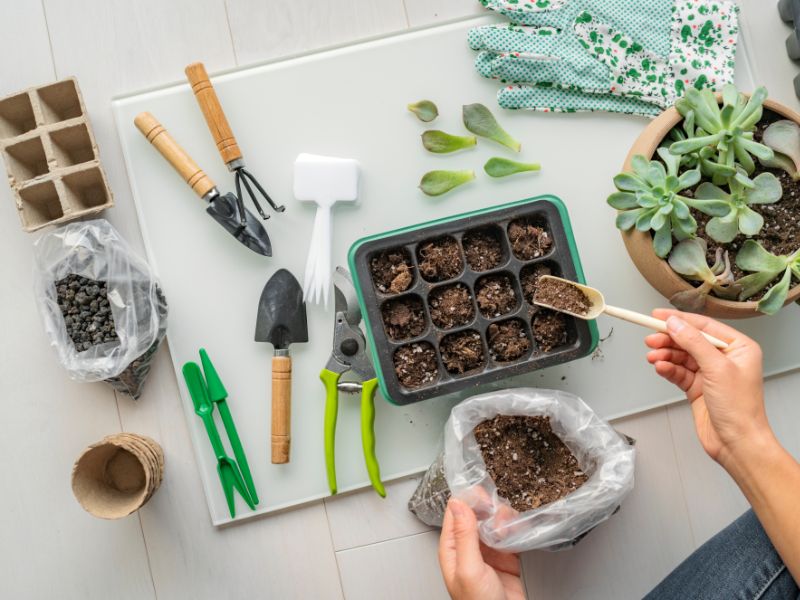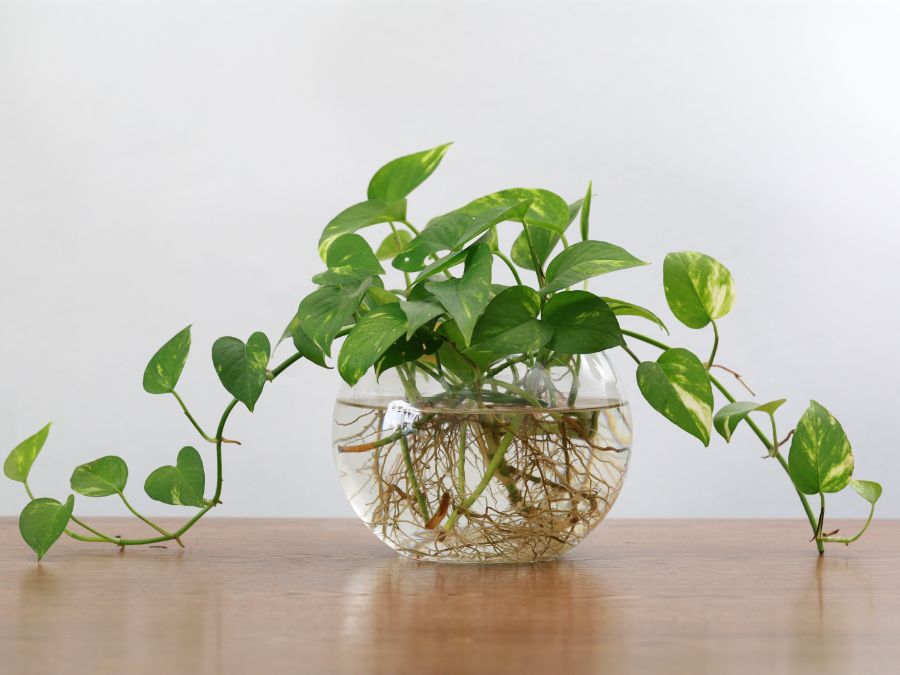We’re here to demystify plant propagation, turning you into an indoor gardening guru. We’ll show you the essential tools and guide you through the process step-by-step.
Don’t worry if you’re a beginner, we’ll cover how to care for your new plants and troubleshoot common problems. Let’s get our hands dirty and start growing our indoor gardens together!
Understanding Plant Propagation
Before we delve into the practical aspects of plant propagation, it’s essential we understand what propagation is and why it’s crucial for your indoor garden’s growth and expansion.
Simply put, propagation is the process of creating new plants from a variety of sources:
- Seeds
- Cuttings
- Bulbs
- Other plant parts
It’s an inexpensive way of increasing the number of your houseplants, and it also allows for the replication of the best qualities of a parent plant.
Imagine having an indoor garden filled with your favorite plants, all thriving and multiplying. That’s what propagation can do! Understanding the science behind it is the first step towards mastering this craft and significantly enhancing your indoor gardening skills.

Essential Tools for Propagation
Now that we’ve grasped the concept of plant propagation, let’s delve into the essential tools we’ll need to successfully kickstart this process in our indoor garden. First off, we’ll need a pair of sharp, sterilized scissors or pruners to take cuttings. Dull or dirty tools can harm plants and spread disease.
Next, a clean pot or container is necessary for planting the cuttings. We’ll also require a good quality potting mix, preferably one designed for propagation, which is lighter and retains more moisture. Rooting hormone can also be beneficial to stimulate root growth in our cuttings.
Lastly, a clear plastic bag or a propagation chamber can maintain humidity around the cutting until roots develop. With these tools, we’re set for success.
Step-by-Step Propagation Guide
Diving into the step-by-step guide, we’ll first identify the plant we want to propagate. It’s crucial to choose a healthy parent plant for successful propagation. We’ll then select a mature, disease-free leaf or stem. For stem cuttings, we’ll make a clean cut below a node, the point where leaves attach. Next, we’ll prepare our pot with fresh, well-draining soil.
We’ll plant the cutting, ensuring the node is beneath the soil surface. Then, we’ll water it lightly. Keeping it in a warm, well-lit spot, we’ll monitor it regularly. It’s vital not to overwater as this can cause rot. In a few weeks, we should see new growth, a sign that our propagation has been successful!

Caring for Your New Plants
Once our plant’s new growth appears, it’s time to shift our focus to nurturing these young sprouts to ensure they thrive and grow into healthy plants. We’ll need to give them the right amount of light, water, and nutrients. Too much or too little of these can lead to problems.
We should place them in a spot where they’ll get enough indirect sunlight. We’ll water them when the top inch of the soil feels dry to the touch, but not soggy.
Additionally, we’ll fertilize them every few weeks with a balanced houseplant fertilizer. Remember, we’re aiming for a steady, healthy growth, not a rapid, unsustainable one.
With a bit of patience and care, we’ll soon have a thriving indoor garden.
Troubleshooting Common Problems
So, what do we do when our houseplants start showing signs of distress or disease? First, don’t panic. It’s essential to diagnose the issue. Overwatering is a common problem; leaves may turn yellow or brown. If that’s the case, let’s reduce watering frequency.
Underwatering can also cause trouble, often presenting as dry, crispy leaves. We’ll need to water more often or relocate the plant to a less sunny area. Sometimes, pests are the culprits.
We’ll need to keep a lookout for common ones like aphids, spider mites, or scale. Using a mild insecticide can help control these pests.
Lastly, inadequate light can stunt growth. We should place our plants where they can receive enough sunlight, but not get scorched.
We’ve guided you through understanding plant propagation
The essential tools needed, a step-by-step guide, caring for your new plants, and troubleshooting common problems. So, let’s get our hands dirty and start growing our indoor garden!
Remember, it takes patience and practice, but it’s worth it when you see your new green friends thriving. Don’t be disheartened by any setbacks. Keep trying, and soon you’ll be a propagation pro!






